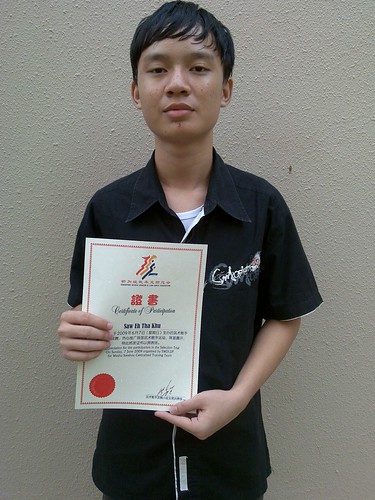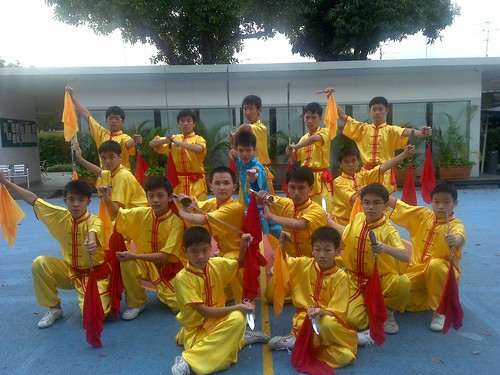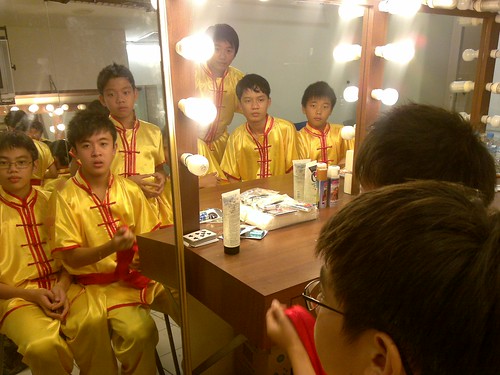My June Holidays: Training, Diving & Shooting
Updated 21st June
Well, its the end of the 3rd week of our June Holidays.
I know the Wushu boys have been training hard during the first 2 weeks. So some of you have been wondering, "What has Mr Siow been doing overseas during his June Holidays?"
Well, the Wushu boys have been training hard- so I have also been training hard myself. Ever since I started teaching, I found that maintaining my own personal training regime was a difficult endeavour. Especially, once the VS Wushu Team started to become a main CCA and we started to make a name for ourselves. I found that between the demands of teaching and overseeing the development of the VS Wushu Team, I started to spend so much time planning, organising, and coaching that struggle to maintain my own training (Ironic, right- that's life :P)
So each holiday, I try to make up for lost time by making a concerted effort to catch up on training with various instructors and fellow training partners.
1) MARTIAL ARTS
Having explored various martial arts and still continuing to cross-train, one of the important core developments in any style is to have good reactions; second to that will be good conditioning. So this June, I travelled to Manila to do some hard training with some very dedicated martial artists.
We covered a wide variety of material here but one of the most important aspects was using the standard boxing punch mitts to hone our reaction and develop our appropriate energy systems (aerobic and anaerobic) for fight training. So here, we see my instructor and good friend, Flint Tabimina guiding me to refine my basic punching and react to the various stimulus given when he flashed the mitts at different positions.
We had about 3 sessions of training everyday (morning, afternoon and night) and covered empty hands, stick and edged weapons as well. All in all on average, we trainned from 4-6 hours a day. Great way to lose weight, I coming back down to my ideal fight weight! Yay!
2) PADI ADVANCED OPEN WATER DIVING
After a week training, my wife joined me in Manila and we flew together towards the Phillipine island of Boracay to continue pursuing our diving journey.
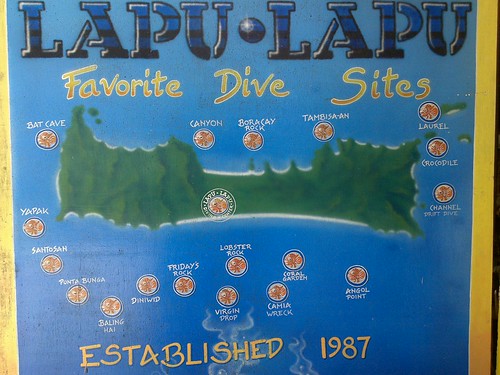
Ever since we dine our PADI Open Water Dive in Krabi last Dec, we have been hooked on diving.
To improve our competency as a dive buddy team, me and the wife decided to pursue the next step in Open Water Diving by going for the PADI Advanced Open Water Diver Certification.
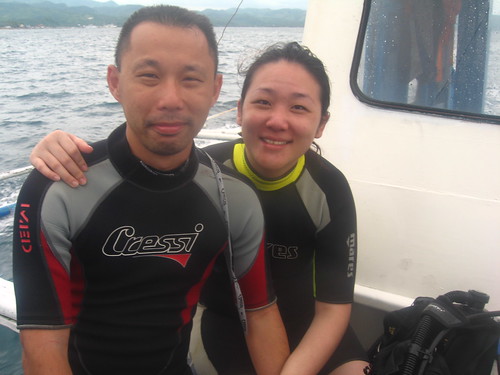
For fulfil the certification criteria, we had to complete 2 compulsory dive modules:
1) Deep Dive and 2)Underwater Navigation Dive
as well as 3 elective dives- for our electives, we chose:
3) Peak Performance Buoyancy 4)Fish Identification 5)Wreck Dive
1) Deep Dive
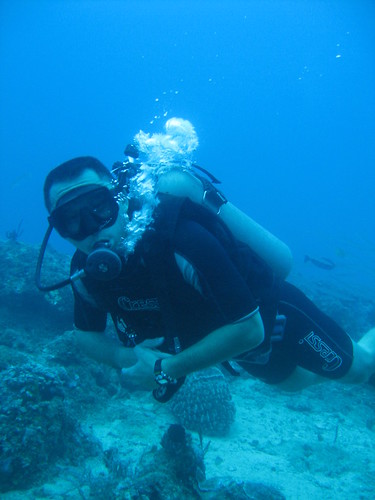
Our Deep Dive was to a depth of 26m and this time round, I had an easier time equalising the pressure in my ears as we descended
2) Underwater Navigation

The other compulsory module was the underwater navigation. We had to be able to follow a specified compass heading underwater and return on our reciprocal heading. We also had to be able to navigate in a square grid by using our compass bearingsand counting our fin kicks. We started out by practicing on the beach- here you see my wife, Geri, practicing with our Dive Instructor Jojo. She's trying to navigate a square grid with her head covered and only using the compass to determine her bearing
It seems easy to do on land but underwater, it was a whole new challenge and we each took a few tries to get used to navigating underwater
3) Peak Performance Buoyancy
I have always been a natural sinker. During my days as a trainee PE teacher in NIE, I was the only one unable to float- at all. When we broke down the components of the front crawl, we would do the flutter kick with our hands outstretched infront of us. The rest of the class would be cruising along the surface of the water; I'd be flutter-kicking my face along the bottom of the pool!
But diving has allowed me to capitalise on my natural negative buoyancy. In the Peak Performance Buoyancy module, we were required to maintain an optimal level of inflation in our BCD and then by controlling our inhalation and exhalation, hover in mid-water without touching the sea-bed or shooting to the surface.
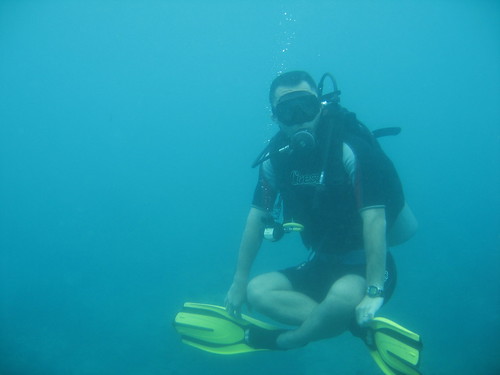
I enjoyed doing this so much, I almost attained Nirvana already :)
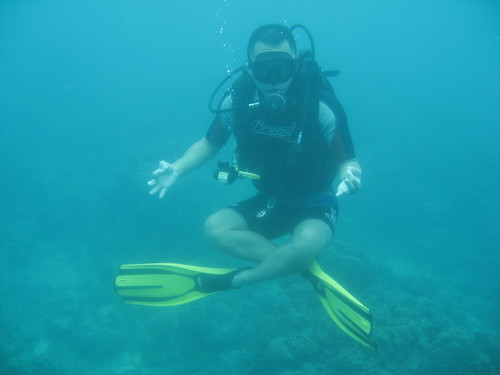
Fish Identification
What's the use of diving if all you see are rocks and sand? Like that might as well put my head in an empty aquarium at home, right?
Part of the joy of diving is the chance to see marine life up close- it's one of the reasons Geri and I don't eat sharks fins now. We're not hard core animal activist but our Open Water Dive Instructor, Liz in Krabi impressed upon us one important point-" If you eat the shark during dinner, you don't expect to see many more swimming down here when you dive right?"
After seeing so many black-tip sharks and leopard sharks up close in Krabi, we realised that we enjoyed the experience of swimming with sharks more than eating them.
In this module, we learnt to sight and identify common marine wildlife around the coral reefs. Here's a picture of the Moray Eel we took when we were down in the Camia Wreck. It's well camouflaged and took some patience for us to find and identify

5) Wreck Diving
Our final module was to dive on a sunked fishing freighter, the Camia. Wreck diving is exciting because you get to see lots of coral and marine wildlife that has grown up around the wreck to form a new marine ecosystem.
Here's our underwater adventure around the Camia Wreck
Diving has indeed provided a good activity for me and my wife to pursue together- it blends my love for adventure with her love of travel.
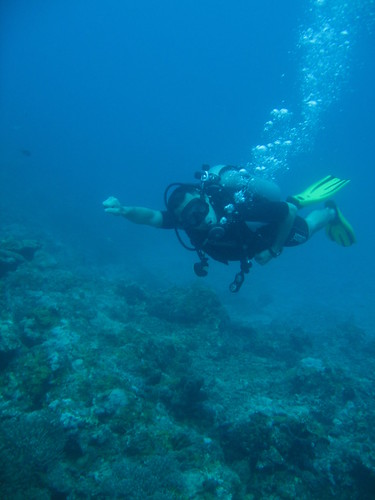

Here's a photo stream of our diving adventures so far!

